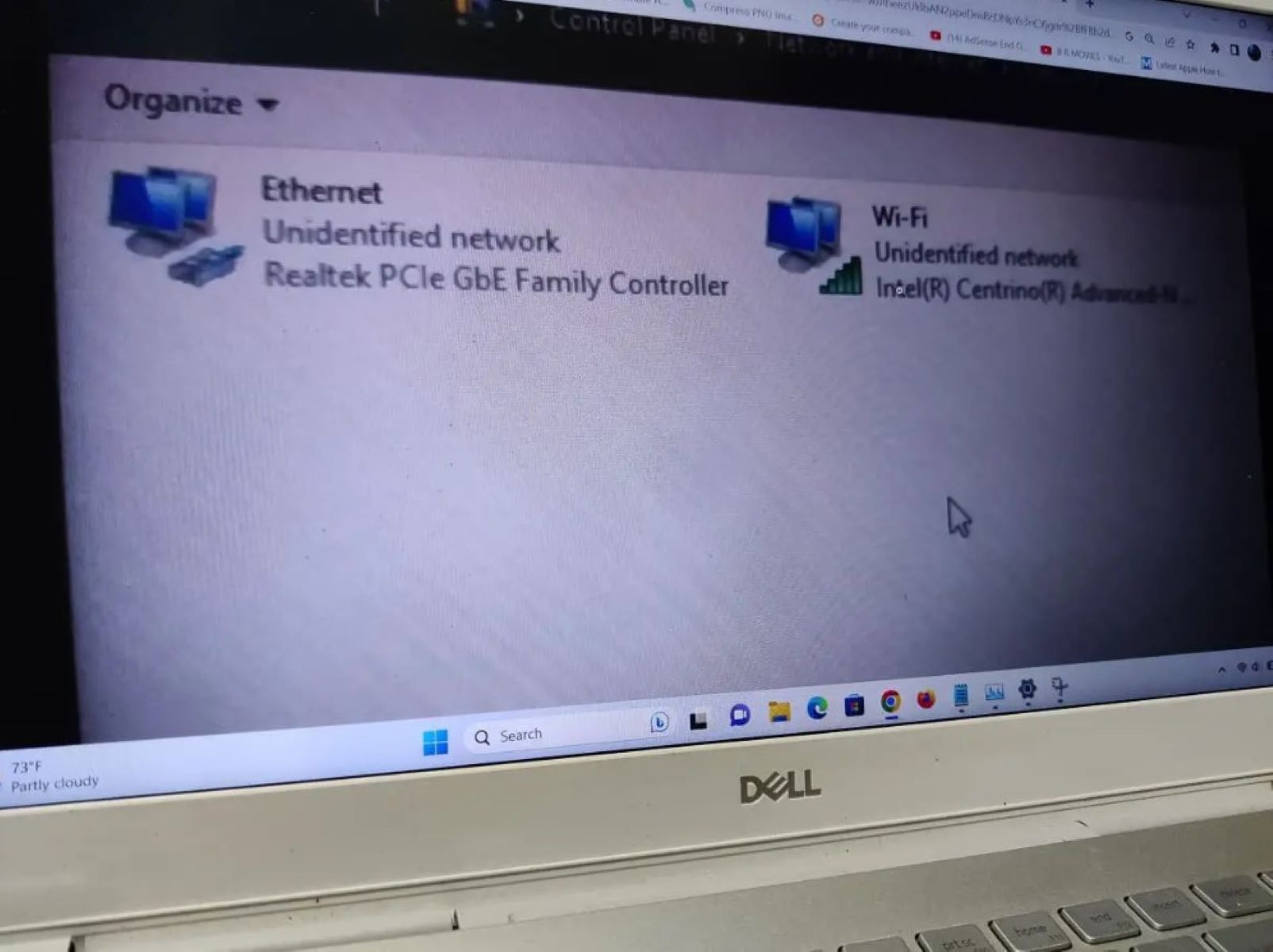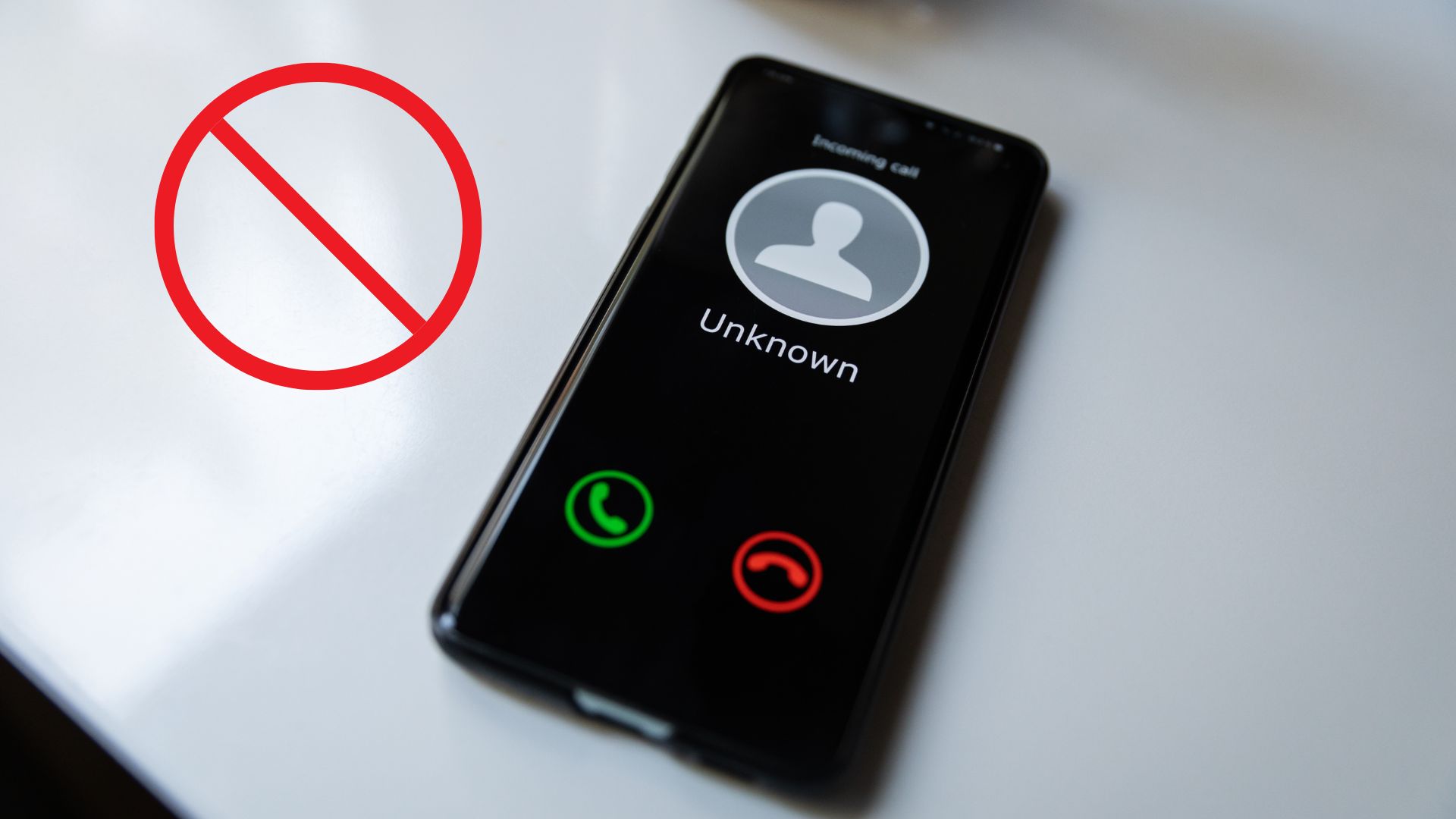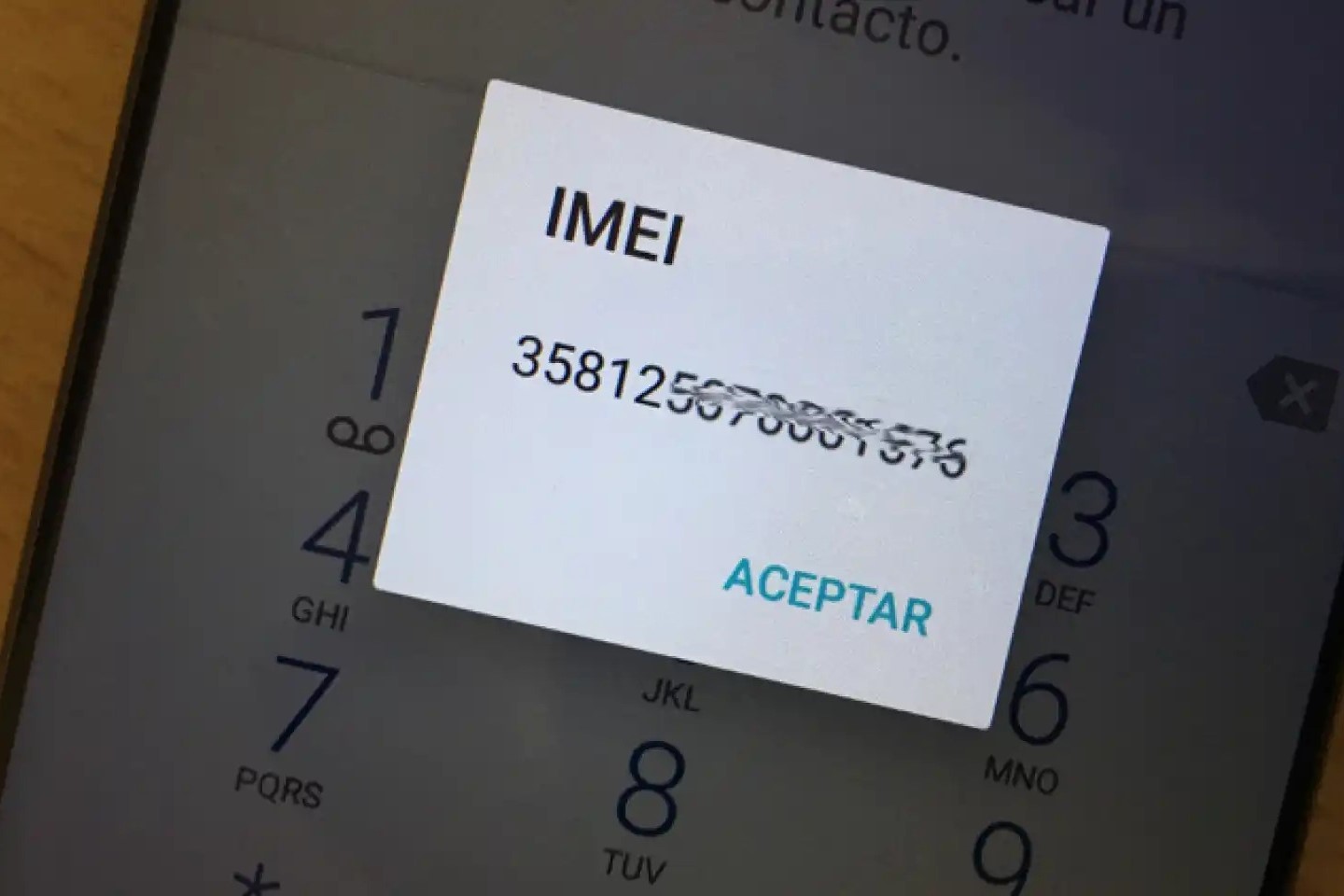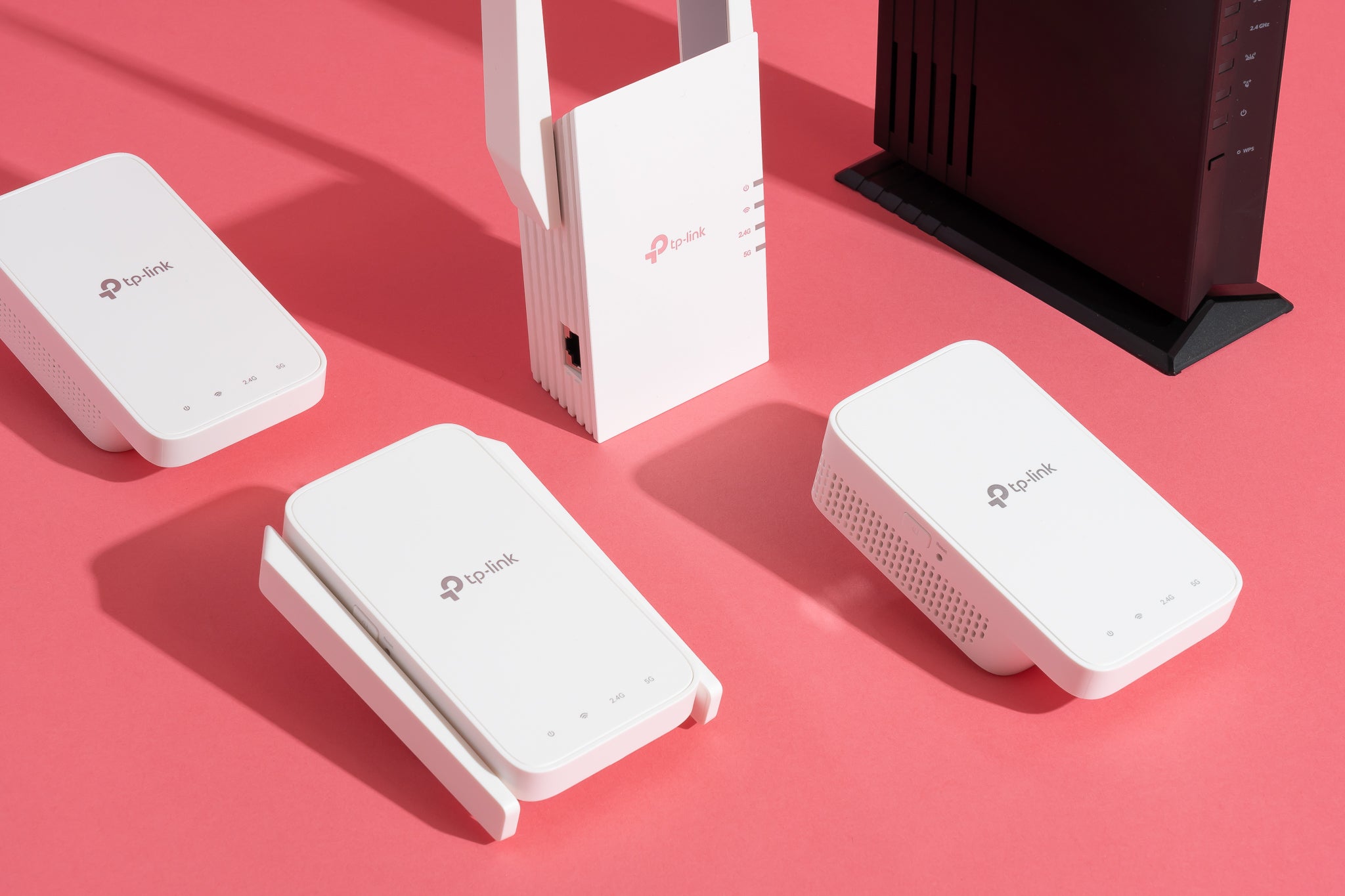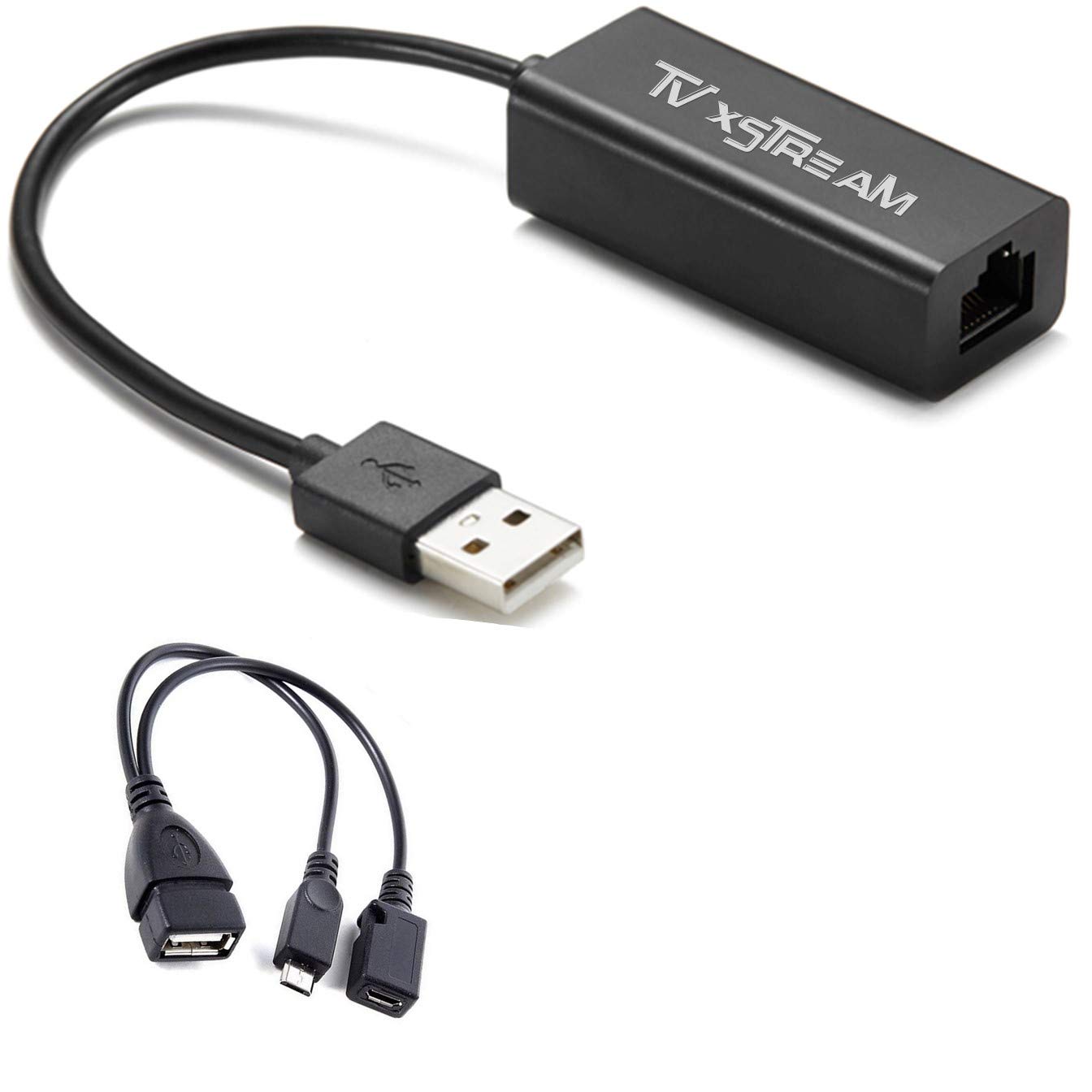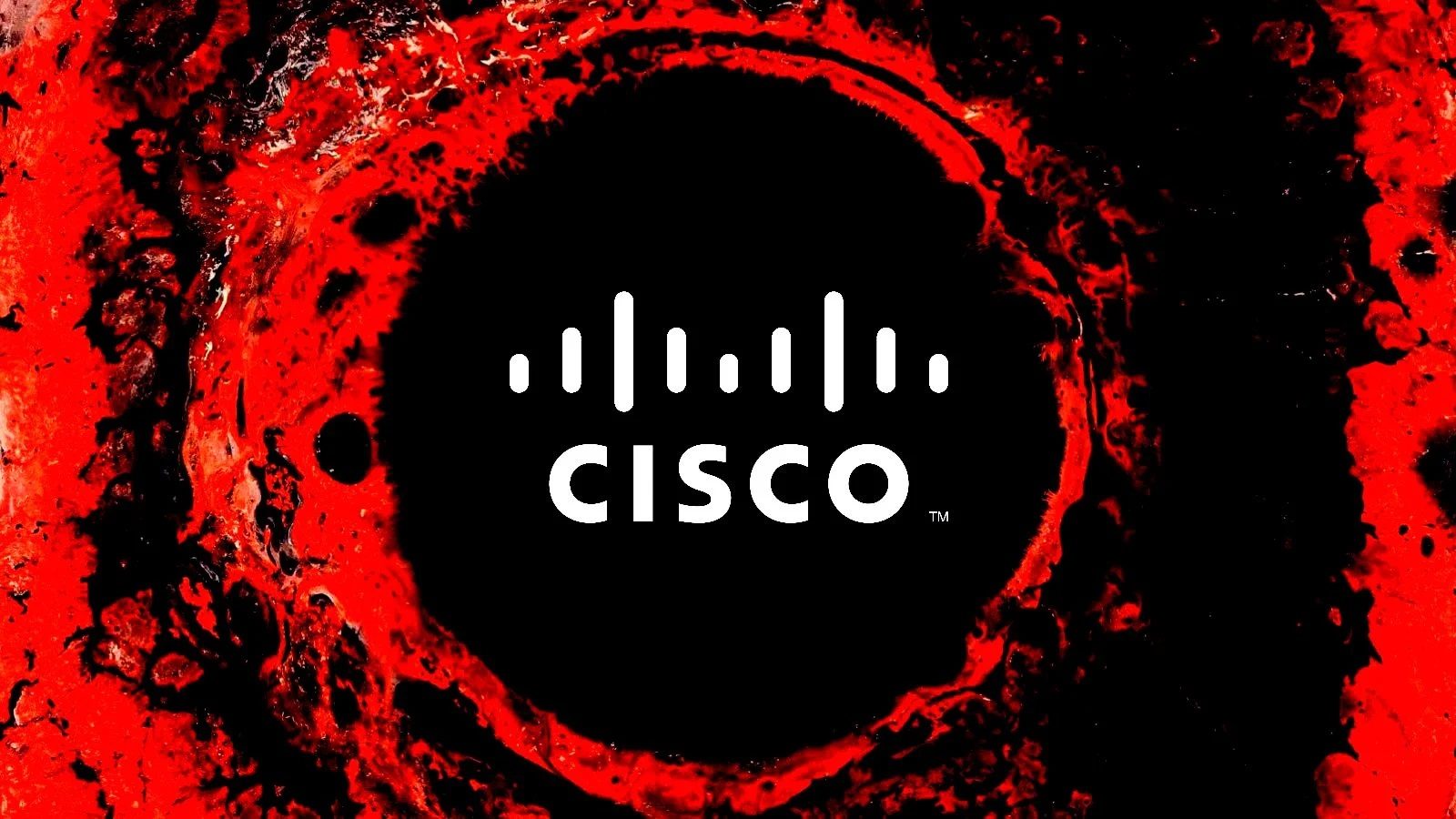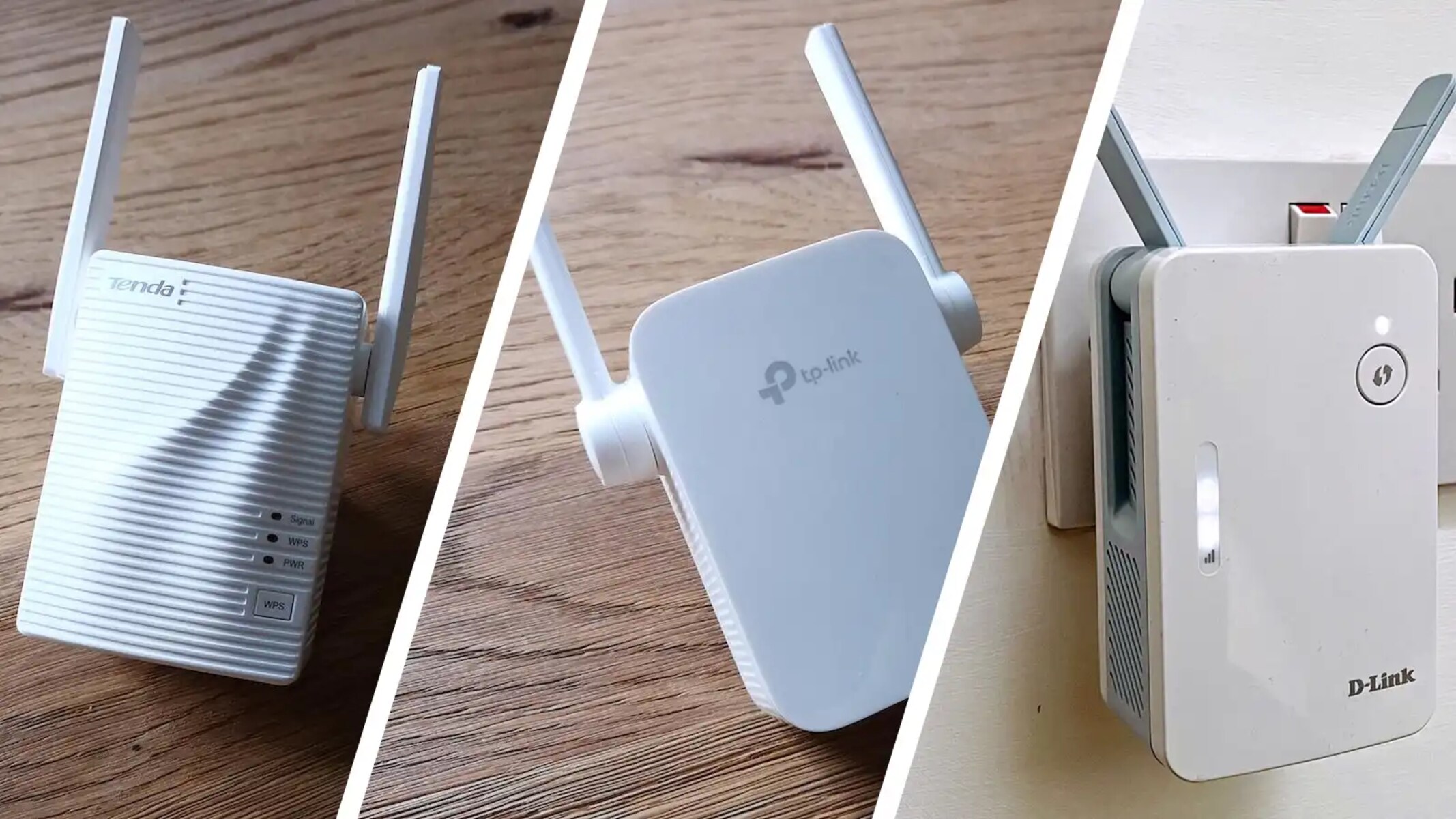Introduction
Have you ever encountered the frustrating situation where your Ethernet connection shows an “unidentified network” error? This perplexing issue can leave you scratching your head and struggling to regain your network connectivity. But fear not, as we delve into the causes and solutions for this problem.
An unidentified network refers to a situation where your computer is unable to identify the network you are connected to. As a result, you will not have access to the internet or any other network resources. This error message typically appears when your computer fails to acquire a valid IP address or encounters conflicts with existing network settings.
This issue can occur for various reasons, ranging from DHCP (Dynamic Host Configuration Protocol) issues to outdated network drivers or firewall software blocking network access. Identifying the root cause is crucial for resolving the problem and getting your Ethernet connection back up and running.
In this article, we will explore the common reasons behind an unidentified network error and provide effective troubleshooting steps to help you fix the issue. By following these steps, you will be able to regain network connectivity and avoid further frustration.
What is an unidentified network?
An unidentified network refers to a network connection that your computer is unable to recognize or identify. When you connect your computer to an Ethernet cable or a Wi-Fi network, the operating system usually categorizes the network as either a private or a public network. However, in some cases, your computer may fail to determine the type of network, resulting in an unidentified network status.
An unidentified network poses a problem because your computer cannot establish a proper connection or obtain the necessary network settings. This means that you won’t have access to the internet or other devices on the network. The issue can occur on any operating system, including Windows, macOS, or Linux.
When your computer encounters an unidentified network, it can display an error message stating “Unidentified Network,” “No Internet Access,” or “Limited Connectivity.” This can be frustrating, especially if you rely on a stable internet connection for work, communication, or entertainment purposes.
The unidentified network error can occur for several reasons, including issues with the Dynamic Host Configuration Protocol (DHCP), IP address conflicts, outdated or incompatible network drivers, firewall or antivirus software blocking network access, or problems with the network adapter itself.
Identifying the cause of the unidentified network error is crucial for troubleshooting and resolving the issue. In the next sections, we will explore these potential causes in more detail and provide step-by-step solutions to help you fix the problem and regain network connectivity.
Common reasons for an unidentified network error
When your computer encounters an unidentified network error, there are several common reasons that could be behind this issue. Understanding these causes will help you pinpoint and resolve the problem effectively. Let’s explore some of the most frequent reasons for an unidentified network error:
DHCP issues: The Dynamic Host Configuration Protocol is responsible for assigning IP addresses to devices on a network. If there is a problem with the DHCP server or your computer fails to communicate properly with it, it can result in an unidentified network error.
IP address conflicts: IP address conflicts occur when two or more devices on the same network are assigned the same IP address. This can cause confusion and prevent your computer from properly identifying the network.
Outdated or incompatible network drivers: Network drivers facilitate the communication between your computer’s network adapter and the operating system. If your network drivers are outdated or incompatible, it can lead to an unidentified network error.
Firewall or antivirus software blocking network access: Sometimes, the built-in firewall or third-party antivirus software on your computer can mistakenly block network access, resulting in an unidentified network error.
Network adapter issues: Problems with the network adapter hardware or its settings can also cause your computer to encounter an unidentified network error. This could include a malfunctioning network adapter, disabled network adapter, or incorrect network adapter settings.
By understanding these common reasons for an unidentified network error, you can now proceed to the next section where we will provide step-by-step solutions to help you troubleshoot and fix this issue.
DHCP issues
Dynamic Host Configuration Protocol (DHCP) plays a crucial role in assigning IP addresses and other network settings to devices on a network. When your computer encounters DHCP issues, it can lead to an unidentified network error. Let’s explore some common DHCP-related problems and how to resolve them:
1. DHCP server not responding: One of the main reasons for DHCP issues is when the DHCP server fails to respond to your computer’s request for an IP address. This can happen if the DHCP server is down, experiencing connectivity issues, or misconfigured. To resolve this, ensure that the DHCP server is operational and properly configured on the network.
2. DHCP lease expired: DHCP leases have a specific duration during which the assigned IP address is valid. Once the lease expires, your computer requests a new IP address. However, if the DHCP server fails to assign a new IP address before the lease expires, it can result in an unidentified network error. To fix this, try restarting your computer or manually renewing the IP address lease.
3. DHCP conflicts: DHCP conflicts occur when multiple devices on the network are assigned the same IP address. This can happen if there is a misconfiguration in the DHCP server or if a device has a static IP address that conflicts with the DHCP-assigned range. Resolving DHCP conflicts involves ensuring that each device has a unique IP address and that the DHCP server is correctly configured.
4. DHCP relay issues: In some cases, network setups involve DHCP relay agents or network devices that forward DHCP requests to a central DHCP server. If there are issues with these relay agents, it can cause DHCP failures and result in an unidentified network error. Ensure that the DHCP relay agents are properly configured and functioning correctly.
To troubleshoot DHCP issues, you can try the following steps:
1. Restart your computer: Sometimes, a simple restart can resolve DHCP-related problems. Restarting your computer can help refresh network settings and establish a new connection with the DHCP server.
2. Check DHCP server status: Ensure that the DHCP server is operational and responding to requests. You can verify this by checking the server’s connectivity, configuration, and any error logs that may indicate issues.
3. Manually release and renew IP address: Open the command prompt and enter the commands “ipconfig /release” followed by “ipconfig /renew” to manually release and renew your IP address lease. This can help establish a new connection to the DHCP server and resolve any potential issues.
By addressing DHCP issues effectively, you can overcome the unidentified network error and restore network connectivity on your computer.
IP address conflicts
IP address conflicts can occur when two or more devices on the same network are assigned the same IP address. This can lead to an unidentified network error and cause connectivity issues. Let’s explore the causes of IP address conflicts and how to resolve them:
1. Static IP address assignment: IP address conflicts can occur if a device has a static IP address that conflicts with the range of IP addresses assigned by the DHCP server. This typically happens when a user manually assigns an IP address to a device without considering the DHCP-assigned IP range. To resolve this, ensure that each device on your network has a unique IP address, either assigned by the DHCP server or manually configured within a non-overlapping range.
2. Misconfigured subnet mask: The subnet mask defines the range of IP addresses that are valid for a particular network. If the subnet mask is misconfigured on a device, it can result in IP conflicts. Double-check the subnet mask settings on each device to ensure they are correctly configured to match the network’s requirements.
3. Duplicate DHCP servers: Having multiple DHCP servers on the same network can cause IP address conflicts. Each DHCP server may assign different IP addresses to devices, resulting in conflicting assignments. To resolve this, ensure that you have only one DHCP server running on your network and deactivate any additional DHCP servers to prevent conflicts.
4. Rogue devices: Sometimes, rogue devices can unknowingly join the network and start using IP addresses that conflict with existing devices. These rogue devices can disrupt network operations and cause IP address conflicts. Identifying and removing these unauthorized devices from the network can help resolve conflicts and restore proper network functionality.
To troubleshoot and resolve IP address conflicts, you can follow these steps:
1. Use DHCP to assign IP addresses: Instead of manually assigning static IP addresses, use the DHCP server to automatically assign IP addresses to devices. This ensures that there are no conflicts with other devices on the network and simplifies network management.
2. Check for conflicting IP addresses: Identify devices that have conflicting IP addresses and manually change their IP addresses to resolve the conflict. Ensure that each device on the network has a unique IP address within the valid range.
3. Restart devices: Restarting both the device experiencing the IP address conflict and the DHCP server can help refresh network configurations and resolve conflicts.
By addressing IP address conflicts effectively, you can eliminate the unidentified network error and establish smooth network connectivity on your devices.
Outdated or incompatible network drivers
Outdated or incompatible network drivers can cause various networking issues, including the “unidentified network” error. Network drivers are software components that allow your operating system to communicate with the network adapter and establish a connection. When these drivers are outdated or incompatible with your system, they can prevent your computer from properly identifying the network. Let’s delve into this issue in more detail and explore solutions:
1. Outdated drivers: Over time, manufacturers release updates for network drivers to improve performance, stability, and compatibility with the latest operating systems and network protocols. If you have outdated drivers installed on your computer, it can result in connectivity issues, including an unidentified network error. To resolve this, you need to update your network drivers to the latest version recommended by the manufacturer.
2. Incompatible drivers: In some cases, the network drivers you have installed may not be compatible with your operating system or the specific hardware configuration of your computer. This can lead to communication errors between the network adapter and the operating system, resulting in the unidentified network error. To fix this, you will need to uninstall the incompatible drivers and install the correct drivers that are compatible with your system.
3. Driver corruption or conflicts: Occasionally, driver files may become corrupted or there may be conflicts between multiple network drivers installed on your system. These issues can interfere with the proper functioning of the network adapter and lead to network connectivity problems. In such cases, uninstalling the problematic drivers, performing a clean installation, and ensuring that only the necessary drivers are installed can help resolve the issue.
To troubleshoot and fix issues with outdated or incompatible network drivers, you can follow these steps:
1. Identify the network adapter and driver: Begin by identifying the network adapter installed on your computer and the corresponding driver version. You can find this information in the Device Manager on Windows or the System Profiler on macOS. Note down the details for reference.
2. Check for driver updates: Visit the manufacturer’s website for your network adapter to check for any available driver updates. Download the latest version of the driver compatible with your operating system and network adapter model.
3. Uninstall the current driver: Open the Device Manager (on Windows) or the System Profiler (on macOS), locate the network adapter, right-click on it, and select “Uninstall” to remove the current driver from your system.
4. Install the updated driver: Install the downloaded updated driver by following the manufacturer’s instructions. Ensure that you select the correct driver version for your operating system and network adapter model.
5. Restart your computer: After the driver installation is complete, restart your computer to allow the changes to take effect. This can help establish a proper connection with the network adapter and resolve any driver-related issues.
By updating or reinstalling your network drivers correctly, you can eliminate the unidentified network error and establish a stable and reliable connection on your computer.
Firewall or antivirus software blocking network access
Firewall and antivirus software play a crucial role in protecting your computer from potential threats. However, at times, these security measures can mistakenly block network access and lead to an unidentified network error. Let’s examine this issue further and explore possible solutions:
1. Firewall settings: Firewalls monitor incoming and outgoing network traffic to ensure data security. Sometimes, the firewall settings can be overly restrictive and block legitimate network connections, resulting in the unidentified network error. To rectify this, you can temporarily disable your firewall and check if the issue is resolved. If it is, you can adjust your firewall settings to allow the necessary network access.
2. Antivirus software: Antivirus programs, in addition to protecting your computer from malware, may also include network protection features that block suspicious or unauthorized network connections. While these features are beneficial for security, they can sometimes interfere with legitimate network connections and trigger the unidentified network error. In such cases, temporarily disabling your antivirus software can help determine if it is the cause of the problem. If it is, adjusting the network protection settings of your antivirus software may resolve the issue.
3. Third-party security software: Apart from the built-in firewall and antivirus programs, third-party security software can also block network access. Similar to the previous steps, temporarily disabling or adjusting the settings of third-party security software can help identify and rectify the issue. Refer to the software’s documentation or contact the provider for guidance on adjusting network access settings.
4. Windows Firewall rules: Windows Firewall has specific rules that govern network access for different applications and services. If these rules are misconfigured or blocked, it can result in network connection issues and the unidentified network error. Review and adjust the Windows Firewall rules to ensure that the necessary network access is allowed for the affected applications or services.
5. Network profile settings: Windows assigns a network profile (public, private, or domain) based on its perception of the network’s security level. Sometimes, if the network is incorrectly assigned as a public network, it can result in a more restrictive firewall configuration that blocks network access. Manually changing the network profile to private or trusted can help resolve the issue and allow the necessary network communication.
Remember to re-enable your firewall and antivirus software after troubleshooting to maintain the security of your computer. However, if disabling these security measures resolves the unidentified network error, it may be necessary to adjust the settings appropriately to ensure a balance between network security and connectivity.
Network adapter issues
Network adapter issues can also contribute to the occurrence of the “unidentified network” error. The network adapter hardware or its settings may be causing communication problems between your computer and the network. Let’s explore some common network adapter issues and potential solutions:
1. Malfunctioning network adapter: A malfunctioning network adapter can lead to connectivity issues, including the unidentified network error. This can happen due to physical damage, hardware failures, or manufacturing defects. If you suspect a malfunctioning network adapter, you may need to replace it with a new one to resolve the issue.
2. Disabled network adapter: Sometimes, the network adapter on your computer may be accidentally or intentionally disabled, resulting in the unidentified network error. To fix this, you need to enable the network adapter. You can do this by going to the Device Manager (on Windows) or the Network settings (on macOS) and ensuring that the network adapter is enabled.
3. Incorrect network adapter settings: Incorrect network adapter settings can cause communication problems with the network, leading to the unidentified network error. Double-check the network adapter settings, such as IP address allocation, DNS configuration, and network protocols, to ensure they are correctly configured according to the network requirements.
4. Power issues: In some cases, power-related issues can affect the network adapter’s performance. This can include insufficient power supplied to the adapter or power-saving settings that hinder network connectivity. Verify the power connections and adjust power-saving settings to ensure that the network adapter is receiving adequate power and functioning optimally.
5. Driver-related problems: Network adapter drivers facilitate communication between the operating system and the network adapter hardware. Issues with the drivers, such as outdated or corrupted drivers, can result in connectivity problems, including the unidentified network error. Updating the network adapter drivers to the latest version or reinstalling the drivers can help resolve driver-related issues.
To address network adapter issues effectively, you can consider the following steps:
1. Verify network adapter status: Check the Device Manager (on Windows) or the Network settings (on macOS) to ensure that the network adapter is recognized and functioning properly. If it is displayed with a warning symbol or an error message, troubleshoot and resolve the specific issue indicated.
2. Enable the network adapter: If the network adapter is disabled, enable it in the Device Manager (on Windows) or the Network settings (on macOS) to restore network connectivity.
3. Check and adjust network adapter settings: Verify the network adapter settings, including IP address allocation, DNS configuration, and network protocols. Make any necessary corrections according to the network requirements.
4. Replace the network adapter: If you have tried troubleshooting steps and suspect a malfunctioning network adapter, it may be necessary to replace it with a new one. Consult a professional or refer to the manufacturer’s guidelines for the appropriate replacement process.
By addressing network adapter issues, you can resolve the unidentified network error and establish a stable and functional network connection on your computer.
How to troubleshoot and fix an unidentified network error
Encountering an unidentified network error can be frustrating, but fear not! There are several troubleshooting steps you can take to identify and resolve the issue. Here are some effective methods to troubleshoot and fix an unidentified network error:
1. Restart your devices: Sometimes, a simple restart can resolve temporary network glitches. Restart your computer, modem, and router to refresh network configurations and establish a new connection.
2. Update your network drivers: Outdated or incompatible network drivers can contribute to the unidentified network error. Visit the manufacturer’s website for your network adapter and download the latest driver version compatible with your operating system. Install the updated drivers to ensure optimal performance.
3. Disable and enable the network adapter: Disabling and enabling the network adapter can help reset its settings and establish a fresh connection. Go to the Device Manager (on Windows) or the Network settings (on macOS) and disable the network adapter. Wait a few seconds, then re-enable it to see if the unidentified network error is resolved.
4. Flush DNS and reset TCP/IP: Flushing the DNS cache and resetting the TCP/IP stack can help resolve network-related issues. Open the command prompt and enter the commands “ipconfig /flushdns” followed by “netsh int ip reset” to clear the DNS cache and reset TCP/IP settings. Restart your computer and check if the issue persists.
5. Release and renew IP address: Open the command prompt and enter the commands “ipconfig /release” followed by “ipconfig /renew” to release and renew your IP address lease. This can help establish a new connection with the DHCP server and resolve any IP address conflicts.
6. Disable firewall or antivirus software temporarily: Temporarily disabling your firewall or antivirus software can help determine if they are causing the unidentified network error. If the issue is resolved after disabling these security measures, adjust the settings to allow network access or consider using alternative security software.
7. Reset network settings: Resetting the network settings on your computer can help resolve various network-related issues. Go to the Network settings and select the option to reset network settings. Keep in mind that this will remove any custom network configurations, so you may need to reconfigure your network connections afterwards.
8. Perform a system restore: If the unidentified network error started occurring after a recent change or installation, performing a system restore can revert your computer back to a previous working state. Choose a restore point before the issue occurred and let the system restore process complete.
By following these troubleshooting steps, you can identify and fix the unidentified network error, restoring smooth network connectivity and eliminating the frustration of the error message.
Solution 1: Restart your devices
One of the simplest yet most effective solutions for many network-related issues, including the unidentified network error, is to restart your devices. Restarting your devices can help resolve temporary glitches and refresh network configurations, allowing for a fresh connection. Here’s how you can restart your devices:
1. Restart your computer: Begin by restarting your computer. Close all open applications and click on the “Start” menu, then select “Restart” or “Restart/Shutdown” depending on your operating system. Wait for your computer to shut down and start up again.
2. Restart your modem and router: Next, restart your modem and router. Locate the power cords of both devices and unplug them from the power outlet. Wait for about 10-20 seconds, then plug them back in. Allow the devices to fully power up and establish a connection.
3. Test the connection: Once your devices have restarted, check if the unidentified network error is resolved. Open a web browser and try to access a website to confirm that you have regained network connectivity. If the error persists, proceed to other troubleshooting steps.
Restarting your devices can help resolve minor network issues, such as conflicting settings or temporary network disruptions. It also ensures that your devices start with a clean slate and establish new connections with network components. If the unidentified network error was caused by a temporary glitch, this solution should resolve it.
If restarting your devices does not resolve the issue, continue to the next troubleshooting step to explore additional solutions.
Solution 2: Update your network drivers
Outdated or incompatible network drivers can contribute to the occurrence of the unidentified network error. Updating your network drivers to the latest version can help resolve compatibility issues, enhance performance, and improve network connectivity. Follow these steps to update your network drivers:
1. Identify the network adapter: Begin by identifying the network adapter installed on your computer. On Windows, you can go to the Device Manager by right-clicking on the Start menu and selecting “Device Manager.” On macOS, you can go to “System Preferences” and then click on “Network.” Look for the network adapter in the list of devices.
2. Visit the manufacturer’s website: Once you have identified the network adapter, visit the website of the manufacturer. Look for the “Support” or “Downloads” section, and search for the latest driver version available for your network adapter model.
3. Download the updated driver: Download the latest driver from the manufacturer’s website, making sure it is compatible with your operating system. Usually, drivers are provided in the form of executable files or installation packages. Save the file to a location on your computer where you can easily access it later.
4. Install the updated driver: Once the driver download is complete, run the installer file and follow the on-screen instructions to install the updated driver. It may involve accepting license agreements, choosing installation options, and restarting your computer. Ensure that you carefully read and follow the instructions provided by the manufacturer.
5. Test the network connectivity: After installing the updated driver, restart your computer to allow the changes to take effect. Once your computer has restarted, check if the unidentified network error has been resolved. Open a web browser and attempt to access a website to verify that you have regained network connectivity.
Updating your network drivers is an essential step in ensuring optimal network performance and resolving compatibility issues. By keeping your drivers up-to-date, you can address potential software-related causes of the unidentified network error and maintain a stable and reliable network connection.
If updating the network drivers does not resolve the issue, move on to the next troubleshooting step to explore further solutions.
Solution 3: Disable and enable the network adapter
Disabling and enabling the network adapter can help reset its settings and establish a fresh connection, potentially resolving the unidentified network error. Here’s how you can disable and enable the network adapter:
1. Open the Device Manager: On Windows, right-click on the Start menu and select “Device Manager.” On macOS, go to “System Preferences” and click on “Network.”
2. Locate the network adapter: In the Device Manager (Windows) or Network settings (macOS), locate the network adapter that is experiencing the unidentified network error. It may be listed under categories such as “Network Adapters” or “Ethernet Adapters.”
3. Disable the network adapter: Right-click on the network adapter and select “Disable” from the context menu. Confirm any prompts that appear. This action will temporarily deactivate the network adapter.
4. Enable the network adapter: Right-click on the network adapter again and this time select “Enable” from the context menu. Confirm any prompts that appear. The network adapter will be reactivated.
5. Test the network connectivity: Once you have enabled the network adapter, check if the unidentified network error is resolved. Open a web browser and try to access a website to confirm that you have regained network connectivity.
Disabling and enabling the network adapter can help refresh its settings and establish a new connection with the network. This method is particularly useful when there are temporary glitches or conflicts with the existing network configuration. By performing these steps, you can eliminate any software-based issues that might be causing the unidentified network error.
If disabling and enabling the network adapter doesn’t fix the problem, continue to the next troubleshooting step to explore additional solutions.
Solution 4: Flush DNS and reset TCP/IP
Flushing DNS and resetting TCP/IP can help resolve network-related issues, including the unidentified network error. These steps clear the DNS cache and reset the TCP/IP stack, which can eliminate any corrupt or invalid network configurations. Follow the steps below to flush DNS and reset TCP/IP:
1. Open the Command Prompt: On Windows, press the Windows key, type “cmd,” and press Enter to open the Command Prompt. On macOS, open the Terminal from the Applications folder or by using Spotlight search.
2. Flush DNS: In the Command Prompt or Terminal, enter the command “ipconfig /flushdns” (for Windows) or “sudo killall -HUP mDNSResponder” (for macOS) and press Enter. This command clears the DNS cache and removes any cached DNS entries.
3. Reset TCP/IP: In the Command Prompt or Terminal, enter the command “netsh int ip reset” (for Windows) or “sudo networksetup -setdnsservers Wi-Fi empty” (for macOS) and press Enter. This command resets the TCP/IP stack to its default settings.
4. Restart your computer: After flushing DNS and resetting TCP/IP, restart your computer to allow the changes to take effect. This helps ensure a clean network configuration upon startup.
5. Test the network connectivity: Once your computer has restarted, check if the unidentified network error has been resolved. Open a web browser and try to access a website to verify that you have regained network connectivity.
Flushing DNS and resetting TCP/IP can address network configuration issues that may be causing the unidentified network error. By following these steps, any corrupt or incorrect network settings are cleared, allowing for a fresh network connection to be established.
If the unidentified network error persists after flushing DNS and resetting TCP/IP, proceed to the next troubleshooting step to explore further solutions.
Solution 5: Release and renew IP address
Releasing and renewing your IP address can help resolve network connectivity issues, including the unidentified network error. This process involves obtaining a new IP address to establish a fresh connection with the network. Follow these steps to release and renew your IP address:
1. Open the Command Prompt: On Windows, press the Windows key, type “cmd,” and press Enter to open the Command Prompt. On macOS, open the Terminal from the Applications folder or by using Spotlight search.
2. Release the IP address: In the Command Prompt or Terminal, enter the command “ipconfig /release” (for Windows) or “sudo ipconfig set en0 BOOTP” (for macOS) and press Enter. This command releases your current IP address, disconnecting your computer from the network.
3. Renew the IP address: In the Command Prompt or Terminal, enter the command “ipconfig /renew” (for Windows) or “sudo ipconfig set en0 DHCP” (for macOS) and press Enter. This command requests a new IP address from the DHCP server, establishing a fresh network connection.
4. Restart your computer: After renewing the IP address, restart your computer to allow the changes to take effect. This ensures that your computer starts with the newly obtained IP address upon reboot.
5. Test the network connectivity: Once your computer has restarted, check if the unidentified network error has been resolved. Open a web browser and try to access a website to verify that you have regained network connectivity.
Releasing and renewing your IP address can help resolve issues related to incorrect or conflicting IP assignments, which may be causing the unidentified network error. By following these steps, your computer establishes a new connection with the network, obtaining a fresh IP address to ensure proper network connectivity.
If the unidentified network error persists after releasing and renewing the IP address, move on to the next troubleshooting step to explore further solutions.
Solution 6: Disable firewall or antivirus software temporarily
Firewall and antivirus software are essential for keeping your computer secure, but sometimes they can mistakenly block network access and result in the unidentified network error. Temporarily disabling these security measures can help determine if they are causing the issue. Here’s how you can disable firewall or antivirus software:
1. Disable the firewall: On Windows, open the Control Panel and navigate to the “System and Security” section. Click on “Windows Defender Firewall” and select “Turn Windows Defender Firewall on or off” on the left sidebar. In macOS, open “System Preferences” and go to the “Security & Privacy” section. Click on the “Firewall” tab and click the lock icon to make changes. Enter your administrator password, then click “Turn Off Firewall” to disable it temporarily.
2. Disable antivirus software: For third-party antivirus software, locate the program’s icon in the system tray (Windows) or menu bar (macOS) and right-click or control-click on it. Look for options related to disabling or pausing protection. It may vary depending on the specific antivirus software you are using. Follow the on-screen instructions or consult the software’s user manual for guidance.
3. Test the network connectivity: After disabling the firewall or antivirus software, check if the unidentified network error is resolved. Open a web browser and try to access a website to verify that you have regained network connectivity. If the error is resolved, it indicates that the firewall or antivirus software was the cause of the issue.
4. Re-enable the firewall or antivirus software: Once you have identified whether the firewall or antivirus software was causing the unidentified network error, it is important to re-enable them to maintain the security of your computer. Follow the steps provided by the software to enable the firewall or antivirus protection again.
Temporarily disabling the firewall or antivirus software can help determine if they are interfering with network access. If the unidentified network error is resolved by disabling these security measures, you may need to adjust their settings to allow network connections or consider alternative security software that is more compatible with your network configuration.
If disabling the firewall or antivirus software does not resolve the issue, proceed to the next troubleshooting step to explore additional solutions.
Solution 7: Reset network settings
Resetting the network settings on your computer can help resolve various network-related issues, including the unidentified network error. This process involves reverting the network settings to their default configurations, eliminating any misconfigurations or conflicts that may be causing the issue. Follow the steps below to reset the network settings:
1. Open the Control Panel or System Preferences: On Windows, open the Control Panel by clicking on the Start menu and searching for “Control Panel.” On macOS, click on the Apple menu and select “System Preferences.”
2. Access the Network settings: In the Control Panel (Windows) or System Preferences (macOS), locate and click on the “Network and Internet” or “Network” settings.
3. Reset network settings: In the Network settings, look for an option to reset or restore network settings. The exact location and wording may vary depending on the operating system version. Click on the option to reset the network settings. Keep in mind that this action will remove any custom network configurations you have made.
4. Confirm the network reset: A confirmation prompt will appear to confirm that you want to reset the network settings. Read the prompt carefully and proceed with the reset. You may be required to enter your administrator password to authorize the change.
5. Restart your computer: After the network settings are reset, restart your computer to allow the changes to take effect. Once your computer has restarted, it will start with the default network settings.
6. Test the network connectivity: Verify if the unidentified network error has been resolved by opening a web browser and trying to access a website. If you can now establish a connection without encountering the error, it indicates that the network settings reset was successful.
Resetting the network settings can help resolve any misconfigurations or conflicts that may be causing the unidentified network error. By restoring the default configurations, you are giving your computer a fresh start and allowing it to establish a new network connection more effectively.
If resetting the network settings does not resolve the issue, proceed to the next troubleshooting step to explore additional solutions.
Solution 8: Perform a system restore
If you are experiencing the unidentified network error after making recent changes or installations on your computer, performing a system restore can help resolve the issue. System restore allows you to revert your computer back to a previous state when it was functioning properly. Here’s how you can perform a system restore:
1. Open the Control Panel: On Windows, open the Control Panel by clicking on the Start menu and searching for “Control Panel.”
2. Access the System Restore: In the Control Panel, search for “Recovery” or “System Restore.” Click on the option to open the System Restore utility.
3. Choose a restore point: In the System Restore utility, you will see a list of available restore points. These are checkpoints created by Windows during significant system changes or installations. Select a restore point from a date when your computer was functioning properly and did not have the unidentified network error.
4. Start the restoration process: Confirm the selected restore point and follow the on-screen prompts to start the restoration process. Note that system restore cannot be undone, so ensure that you have backed up any important files before proceeding.
5. Wait for the restoration to complete: The system restore process may take a while to complete. Your computer will restart multiple times during the restoration. It is important not to interrupt the process.
6. Test the network connectivity: After the restoration is complete and your computer has restarted, check if the unidentified network error has been resolved. Open a web browser and try to access a website to verify that you have regained network connectivity.
Performing a system restore can undo any recent changes or installations that may have caused the unidentified network error. By restoring your computer to a previous state when it was functioning properly, you can eliminate any software-related issues that might be causing the error.
If the unidentified network error persists even after performing a system restore, you may need to consider other troubleshooting steps or seek technical assistance from a professional.
Conclusion
Encountering the unidentified network error can be frustrating, but with the right troubleshooting steps, you can resolve the issue and regain network connectivity. Throughout this article, we have explored common reasons behind the unidentified network error, such as DHCP issues, IP address conflicts, outdated or incompatible network drivers, firewall or antivirus software blocking network access, network adapter issues, and more.
We have provided a range of solutions to help you troubleshoot and fix the unidentified network error. From restarting your devices and updating network drivers to disabling firewall or antivirus software, flushing DNS, resetting TCP/IP, releasing and renewing IP addresses, resetting network settings, and even performing a system restore, these solutions cover various possibilities and aim to address different underlying causes of the error.
Remember, it is important to approach the troubleshooting steps systematically and follow the instructions carefully. Always consider the specific details of your network setup and adapt the solutions accordingly. If you are uncertain about any steps or the technical aspects involved, it is recommended to seek assistance from a knowledgeable professional.
By diligently following the troubleshooting steps outlined in this article, you can successfully resolve the unidentified network error and restore network connectivity on your computer. With a stable and reliable network connection, you can once again enjoy seamless access to the internet and other network resources without the frustration of encountering the unidentified network error.







